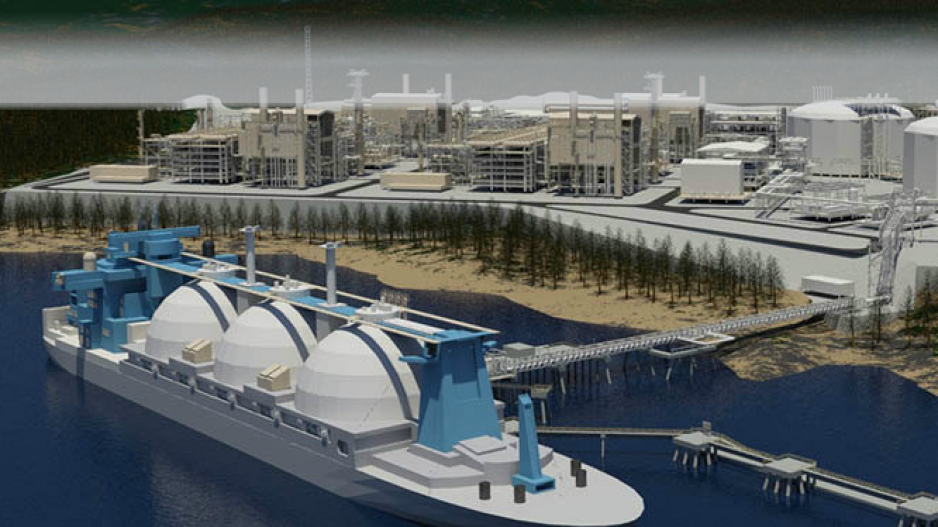Chevron Corp. (NYSE:CVX) is taking a US$10 billion to US$11 billion write-down and is considering selling some of its assets, including its 50% stake in the Kitimat LNG project.
The company has revised its revenue projections in the light of an oil and gas glut in the U.S. and depressed natural gas prices and is tightening its belt. The company attributes about half of the tax impairment to its Appalachia shale assets.
The company says it is considering selling some of its shale assets in the U.S. and its 50% share in Kitimat LNG, which just recently received a new 40-year LNG export licence from the Canada Energy Regulator.
“As a result of Chevron’s disciplined approach to capital allocation and a downward revision in its longer-term commodity price outlook, the company will reduce funding to various gas-related opportunities including Appalachia shale, Kitimat LNG and other international projects,” the company said in a press release December 10. “Chevron is evaluating its strategic alternatives for these assets, including divestment.”
The other partner in the Kitimat LNG project is Australia’s Woodside Energy. The Kitimat LNG project was the first major LNG project to be proposed in B.C. and has changed hands before.
Originally proposed as an import terminal, the project was sold by LNG pioneer Alfred Sorensen to Apache Corp. and EOG Resources. Later Encana Corp. (TSX:ECA) bought a 30% share. None of those companies still own stakes in the project.
Apache sold its stake to Woodside Resources, and Chevron later bought out Encana and EOG.
In a recent analysis for the Oxford Institute of energy Studies, Peter Findlay of Criterium Group in Calgary predicted that Western Canada “is likely to offer one of the lowest-priced sources of global gas for decades to come,” but said Canada has fumbled the ball, allowing the U.S. to beat Canada in the race towards becoming a major LNG exporter.
He notes superior natural gas assets in the Western Canadian Sedimentary Basin compared with the U.S., but says an “incoherent and ineffectual approach to regulating it” is largely to blame for Canada losing ground to the U.S.
"I think it's important to note that ownership changes are not unusual in projects like this – large capital energy projects," said Bryan Cox, CEO of the BC LNG Alliance. "I think what's really important to note is that Chevron very clearly stated in its remarks that they view this project as globally competitive.
Chevron and Woodside recently sought an amendment to its environmental certificate to allow a change in both scale and design. The proponents want to increase production and use all electric drive, which would dramatically shrink its the project's carbon emissions intensity.
"It's a very attractive project," Cox said. "And we're confident, as an industry, that, should they divest, the next owner can move this over to a final investment decision."
In his analysis, Findlay said a final investment decision on Kitimat LNG is not expected until around 2022 or 2023, with completion and commissioning timed for 2029.




